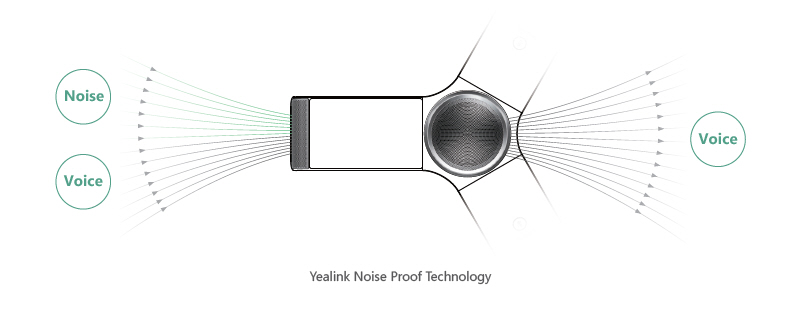Introduction
In an era where communication technology evolves at breakneck speed, the fusion of Artificial Intelligence (AI) with Voice over Internet Protocol (VoIP) systems presents a transformative opportunity. This article delves deep into how AI is shaping the future of VoIP communications, revolutionizing not just how we communicate but also enhancing efficiency, security, and user experience. As businesses increasingly lean on VoIP phone systems for their operations, understanding the implications of AI in this realm becomes crucial.
The Evolution of VoIP Phone Systems
What is VoIP?
Voice over Internet Protocol (VoIP) represents a revolutionary shift from traditional telephony to digital communication. Instead of sending voice signals through conventional circuits, VoIP converts these signals into data packets transmitted over the internet.
Key Features of VoIP Phone Systems
VoIP phone systems offer numerous advantages:
- Cost Efficiency: Lower operational costs compared to traditional phone lines. Scalability: Easy to add or remove lines depending on business needs. Flexibility: Ability to make calls from any location with internet access.
Historical Overview
From its inception in the late 1990s, VoIP has undergone significant advancements. Initially limited by bandwidth issues and call quality concerns, today’s VoIP phone systems are equipped with advanced codecs and powerful infrastructure, making them a staple for businesses worldwide.
How AI is Revolutionizing Communication
AI and Its Role in Modern Technology
Artificial Intelligence refers to computer systems designed to perform tasks that typically require human intelligence. In the context of communication, AI facilitates automation and predictive analytics.
The Intersection of AI and VoIP Communications
When AI meets VoIP communications, it leads to groundbreaking innovations such as:
- Speech Recognition: Enabling automated transcription services. Natural Language Processing (NLP): Enhancing customer interactions through chatbots and virtual assistants.
Enhancing Customer Service with AI-Powered VoIP Phone Systems
Automated Customer Support Systems
AI can significantly enhance customer service by automating responses and providing immediate solutions through chatbots integrated into VoIP systems.
Predictive Analysis for Better Customer Experience
By analyzing customer data and interaction patterns, AI can predict customer needs and preferences, allowing businesses to tailor their services effectively.
Improving Call Quality Through AI Technologies
Noise Cancellation Algorithms
AI algorithms help filter out background noise during calls, ensuring clearer communication. This technology is crucial for remote workers who often face distractions in home environments.
Dynamic Bandwidth Allocation
AI can monitor network traffic in real-time to optimize bandwidth usage during calls. This ensures high-quality audio even during peak usage times.
Security Enhancements in VoIP Communications Using AI
Fraud Detection Mechanisms
With cyber threats on the rise, AI's capability to detect unusual calling patterns can help flag potential fraud before it escalates.
Real-Time Threat Analysis
AI systems continuously analyze data packets for anomalies that may https://juliusndod184.weebly.com/blog/voip-or-not-making-sense-of-your-business-communication-needs indicate security breaches or attacks on the VoIP network.
The Future: Predicting Trends in AI-Driven VoIP Communications
Integration with IoT Devices
As more devices connect through the Internet of Things (IoT), integrating AI-powered VoIP communications will enhance user experiences across multiple platforms.
Personalized Communication Experiences
With advancements in machine learning algorithms, future VoIP systems could offer personalized recommendations based on previous interactions, resulting in a more tailored communication experience.
Benefits of Implementing AI in Your Business’s VoIP System
Cost Savings and ROI Improvement
Investing in an AI-enabled VoIP system can lead to substantial cost savings by reducing manpower requirements for customer service roles while improving overall service efficiency.
Increased Productivity Among Employees
Automating routine tasks allows employees to focus on more strategic initiatives rather than mundane activities like answering frequently asked questions.
Challenges Faced When Integrating AI into VoIP Systems
Data Privacy Concerns
As businesses leverage user data for better services via AI analytics, concerns about data privacy arise. Striking a balance between personalization and privacy will be key moving forward.
Technical Limitations
Despite advancements, some organizations may face technical challenges when integrating new AI technologies into existing legacy systems.
FAQs
1. What are some examples of AI applications in VoIP?
AI applications include speech recognition software for transcriptions and chatbots that assist customers via voice interactions within a VoIP framework.
2. How does using a VoIP phone system improve business efficiency?
A cloud-based VoIP phone system streamlines communications by offering features like voicemail-to-email integration and call routing without requiring extensive hardware setups.
3. Are there specific industries benefiting more from AI-driven VoIP?
Industries such as healthcare, finance, and retail heavily rely on effective communication tools; thus they reap significant benefits from integrating AI with their existing systems.
4. Can small businesses afford advanced Ai features in their current VOIp systems?

Yes! Many vendors provide scalable solutions that allow small businesses access to cutting-edge technologies at competitive pricing options suited to their budgets.
5. What should I consider when choosing a new VOIp phone system?
Consider factors such as scalability options available; cost-effectiveness; ease-of-use; feature set including integrations with other tools your company uses regularly!
6. Will my existing hardware work seamlessly with new Ai-powered VOIp solutions?
It depends on compatibility! Before switching providers or adding new functionalities always check if any upgrades are necessary!
Conclusion
The integration of Artificial Intelligence into Voice over Internet Protocol communications marks a pivotal moment for businesses looking to enhance operational efficiency while providing exceptional customer experiences. From improved call quality through advanced algorithms to secure networks safeguarded against fraud—AI is reshaping how we perceive communication altogether! As organizations continue embracing these technologies within their infrastructures—one thing remains clear: The future looks promising indeed!
In summary, understanding "How AI is Shaping the Future of VoIP Communications" not only prepares businesses for upcoming changes but also empowers them with tools that unlock greater potential than ever before!
This article has explored various dimensions surrounding how artificial intelligence impacts voice-over-internet-protocol technology—from historical context down right up until what lies ahead! Embracing innovations today means seizing opportunities tomorrow; don't miss out!